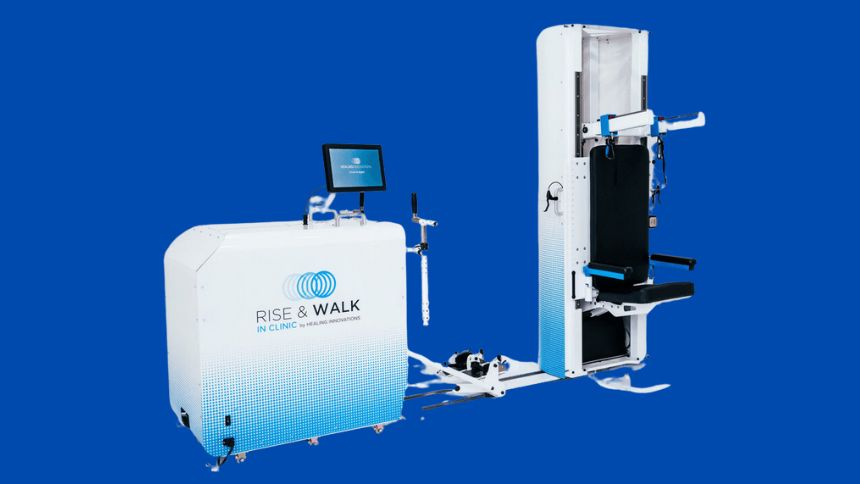
Nashville’s Healing Innovations wins Phase II SBIR from the National Institutes of Health
The grant will support the creation of a high-intensity rehab solution designed for home use.
Healing Innovations, a Nashville-based company we first met in 2019 when it was a participant in the inaugural “HealthTech Accelerator” in Chattanooga, has won a Phase II Small Business Innovation Research (SBIR) grant from the National Institutes of Health (NIH) to support the development of a new in-home neurorehabilitation technology.
The highly competitive grant is part of the NIH’s prestigious Seed Fund, which supports groundbreaking medical technologies with the potential for significant societal impact.
Healing Innovation’s flagship product, the Rise&Walk® InClinic, is the first rehabilitation station to integrate upper extremity movement into the gait pattern. With this new funding, the company will develop a first-of-its-kind in-home robotic technology. The grant will support the creation of a high-intensity rehab solution designed for home use, benefiting populations like veterans and rural residents with limited access to clinical settings.
“This grant from the NIH represents a pivotal moment for Healing Innovations and marks a significant step forward in our mission to develop transformative rehabilitation technologies. We’re eager to expand our impact and change more lives with these advancements,” said Chief Executive Officer Luke Benda.
Healing Innovations will partner with Kessler Foundation, a global leader in rehabilitation and disability research, for clinical trials of the new technology among stroke patients. The collaboration will focus on engineering interventions that enhance mobility, helping stroke survivors regain their ability to walk and reintegrate into their communities more effectively.
As Benda told us for this 2019 teknovation.biz article, his journey to develop Healing Innovations started in 2015 when his friend – Tim – was in an automobile accident and suffered a C5 spinal cord injury that paralyzed him from the neck down.
“Tim is a real fighter,” Benda says, so he made some progress while he was in therapy before the insurance coverage reached the maximum number of therapy treatments. “My family stepped-in to help, but we could not find the type of therapy that he really needed.”
That therapy is something called gait training that simulates the walking motion. “You are retraining your spine and nerves on how to walk again,” Benda explains.
Like what you've read?
Forward to a friend!

